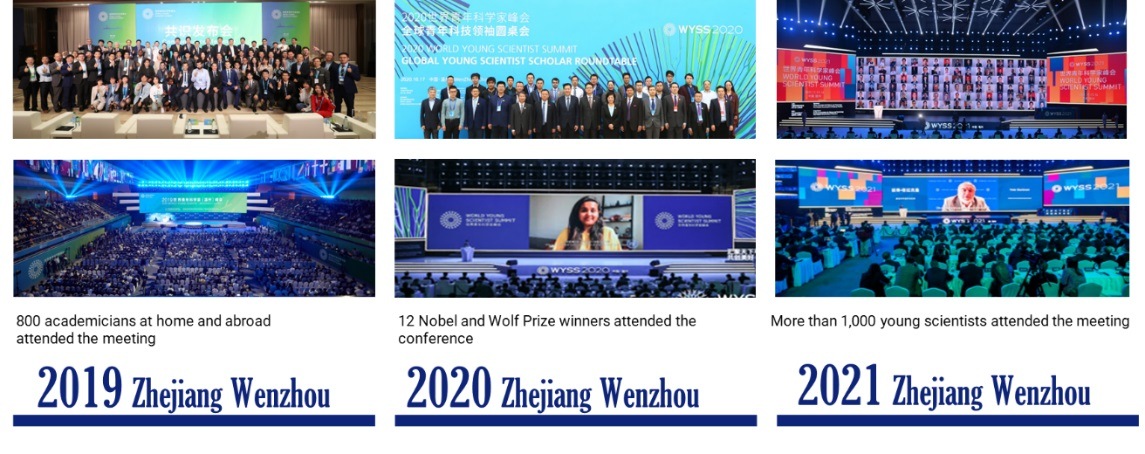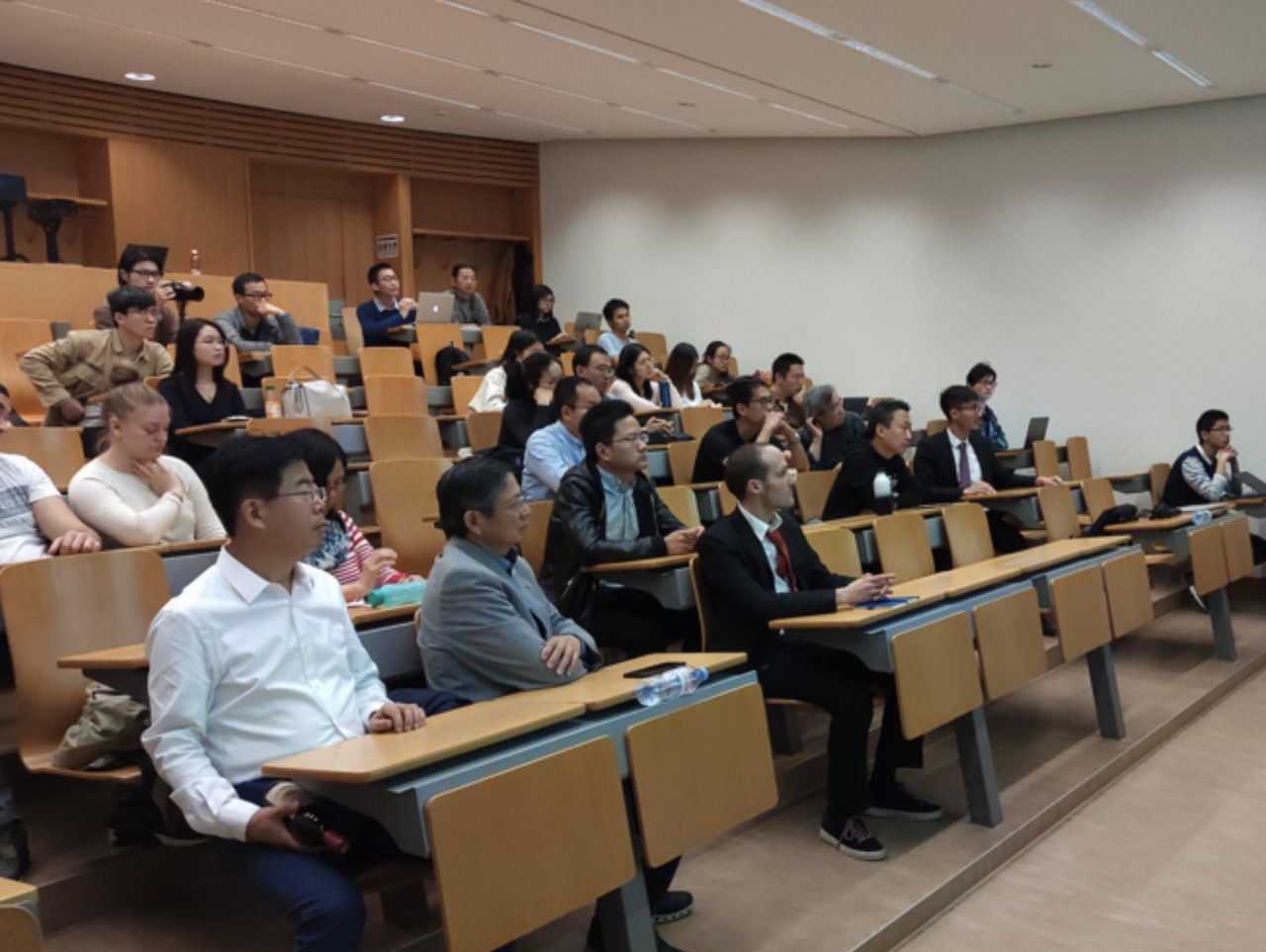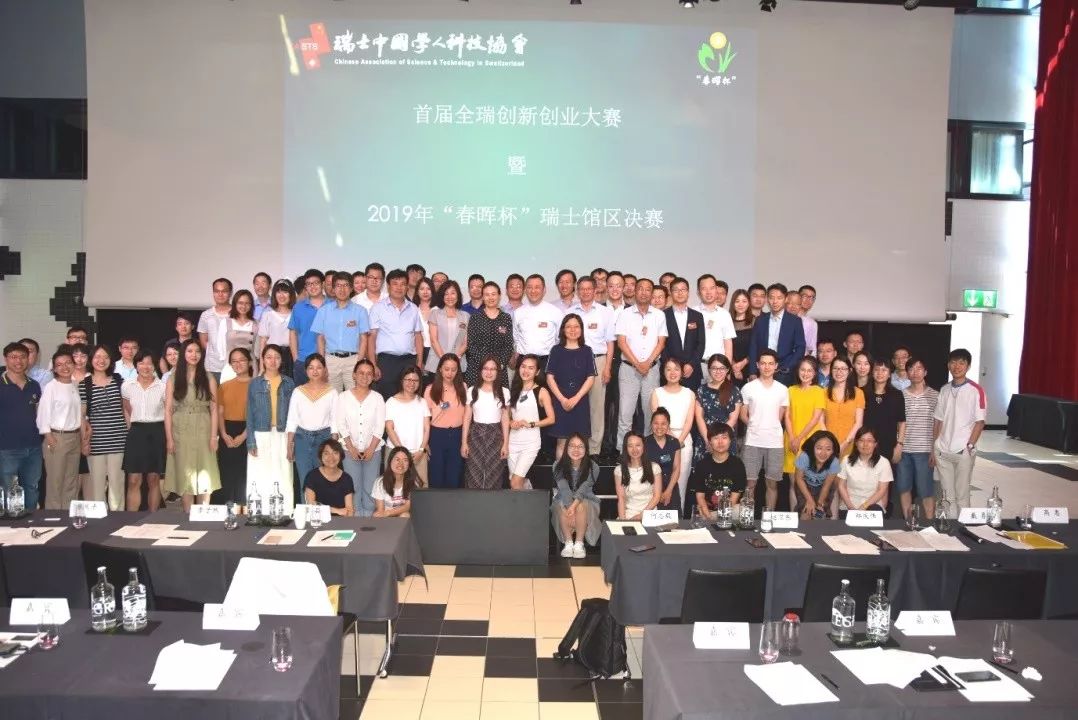瑞士中国学人材料科学与能源科技协会2018年年会于12月8日在苏黎世联邦理工学院顺利召开。来自瑞士各地材料与能源相关专业的三十余名学术界与工业界的学者以及协会成员代表参加了会议。驻瑞士大使馆教育处秦立崴老师出席了活动。
 图一与会人员合影留念
图一与会人员合影留念
中国驻瑞士大使馆教育处的秦老师首先向大会致辞。秦老师赞扬了材料科学与能源科技协会成立以来的众多精彩活动,强调了科协组织高端人才聚集平台等诸多优势,带来了使馆领导对海外中国学者的关心和亲切问候,并提出了对协会成员们将来的期许,希望大家在立足本职工作认真科研的同时,要好好生活,进一步融入本地社会。随后,科协副主席、材料科学与能源科技协会主席曲军博士简要回顾了过去一年中材料科学与能源科技协会的各项活动情况。除了夏季以宝石鉴定设计为主题的品牌活动“博士论坛”和及手表博物馆参观等活动外,材料与能源分会还同其他兄弟协会一起组织了包括职场经验分享等诸多广受欢迎的活动。作为瑞士中国学人科技协会(CASTS)的分支组织机构,瑞士中国学人材料科学与能源科技协会(CAMSETS)自2013年成立以来不断壮大、发展迅速,现有会员120人。协会致力于通过开展各项材料及能源科学领域的科技活动及服务、支持该领域专业人士的不同需求的各种活动, 促进材料与能源科学领域青年学者之间的交流与沟通。本次年会在梁舒宇博士的主持下进行。
 图二中国驻瑞士大使馆教育处秦老师发言
图二中国驻瑞士大使馆教育处秦老师发言
 图三曲军博士作大会报告
图三曲军博士作大会报告
之后,五位来自不同领域的嘉宾为与会人员带来了精彩的主题报告。
比尔应用科技大学的Prof. Dr. Peter Niemz 首先为大家带来了题为木材在建筑中的发展趋势和前景的报告。Niemz教授先介绍了木材在日程生活中的的应用以及使用过程中的问题,然后结合自己数十年的研究经历,深入浅出的为大家讲解了木材研究的主要内容和测试方法和主要发展方向,并展望了未来生产建设当中木材广阔的应用前景。
来自INTERA Incorporated (Swiss branch)的李超博士随后介绍了瑞士核废料处理项目。瑞士将逐步关停所有核电站,核废料处理是瑞士社会当今面临的重要议题。李超博士结合自己的专业研究工作,由浅入深向大家介绍了核反应堆中核废料的危害,以及目前世界主要国家处理的核废料的情况和方法,最后为大家呈现了瑞士目前对于核废料的处理方式和未来的规划。
之后,来自Paul Scherrer Institut的公维佳博士为大家介绍了他关于中子成像对于锆中氢扩散的量化研究的博士课题。锆基材料是核废料包效管的重要部分,而氢原子在锆基材料中的扩散行为会使这种材料出现裂纹损坏影响寿命。他结合自己的研究课题,为大家讲解了氢原子分布研究的先进表征手法。
工作于Siemens Building Technologies的杨丹彤女士随后为大家介绍了西门子建筑技术公司的构架和发展情况以及未来规划。作为西门子集团的重要组成部分,Siemens Building Technologies致力于智能建筑相关系统产品研发和生产,覆盖建筑能耗、通风、室内环境健康、防火安全等领域,提供从建筑使用信息监测,数据分析处理到反馈执行的全过程系统解决方案。同时企业努力为员工创造舒适温馨的工作环境,并为员工的个人发展提供全面的辅助支持。杨丹彤女士向大家发出邀请,欢迎大家加入Siemens Building Technologies的大家庭。
来自Paul Scherrer Institut的王星是首届全瑞华人科技海报大赛(CASTS S&T Poster Session)最佳海报获得者之一。王星以他获奖的海报为基础为大家讲解了计算在材料以及能源当中的应用和乐趣。现代高速发展的超级计算机和量子计算机都意味着计算能力的提高,计算学的应用显著加快了材料和能源领域的研究和发展,意义深远。
报告结束后,与会人员们在Apero上进行了更加深入的自由交流。最后,材料科学与能源科技协会理事会成员们进行了年度理事会议,讨论了下一年度的组织人事安排和工作任务计划。
 图四Niemz教授与大家热烈讨论
图四Niemz教授与大家热烈讨论
 图五李超博士为大家讲解
图五李超博士为大家讲解
 图六公维佳博士为大家讲解
图六公维佳博士为大家讲解 图七杨丹彤女士为大家解答问题
图七杨丹彤女士为大家解答问题
 图八王星为大家作报告
图八王星为大家作报告
 图九 梁舒宇博士在主持中
图九 梁舒宇博士在主持中
报道:陈铭王晓蒙
摄像:公维佳
2018 annual meeting of Chinese Association of Materials Science and Energy Technology in Switzerland
On 8thDec 2018, the Chinese Association of Materials Science and Energy Technology in Switzerland (CAMSETS) held its 2018 annual meeting in the ETH Zurich. More than thirty members from academia and industries across Switzerland participated in the meeting. First, Mr. Qin from the education department of Chinese embassy gave a warm greeting to Chinese researchers. Dr. Jun Qu, who is the Chairman of CAMSETS, gave a short talk about events in the past year. Finally, all the guests communicated and exchanged the ideas with each other about the academic issues. Founded in 2013 as a subsidiary of CASTS (Chinese Association of Science and Technology in Switzerland), the Chinese Association of Materials Science and Energy Technology in Switzerland (CAMSETS) has undergone rapid development in the last three years and currently has 120 members. Committed to building a quality communication and collaboration platform for young materials and energy science pioneers in Switzerland and potentially expanding it globally, we’ve devoted enormous efforts in organizing various scientific seminars and events relating to materials and energy science, as well as assorted activities to facilitate scientists’ researches and their efforts on commercialization of their innovations. Five invited speakers reported their research projects and result, interesting and professorial. The names and titles of the invited speakers are:
- Timber in construction-Trends and perspectives, Prof. Dr. Peter Niemz,Biel University of Applied Science
Prof. Niemz introduced the application and corresponding problem of timber during service. He presented the focus and research methods of timber all over the world based on his tens of year research work. He also gave us a forecast of timber application in the future.
Resume: Peter Niemz studied wood technology at the TU Dresden and obtained his doctorate there in 1982. He subsequently moved to the ETH Zürich, where he has been active as Professor for Wood Physics for 18 years. He has more than 500 publications and was also significantly involved in 10 specialist books, as author or publisher.
- Engineering support for Swiss National Nuclear Waste Disposal program, Dr. Chao Li,INTERA Incorporated (Swiss branch)
Dr. Chao Li presented how different country disposal the nuclear waste and its influence on the environment. He also introduced the future plan and the development of nuclear disposal in Switzerland. It’s a hot and critical issue in the Switzerland now.
Resume: Chao Li has obtained his phd thesis in the field of geomechanical analysis and modelling of CO2 storage and graduated in 2016. Now Dr. Chao Li is the geomechanic expert in INTERA Incorporated, Swiss branch, to support various national cooperatives for the disposal of radioactive waste such as ANDRA, France and Nagra Switzerland.
- Hydrogen diffusion in zirconium quantified by neutron imaging, Dr. Weijia Gong, Laboratory for Nuclear Materials, Paul Scherrer Institut
Dr. Weijia Gong introduced the cutting edge research of imaging hydrogen in the zirconium by neutron diffraction. Hydrogen is detrimental for the zirconium, which is frequently used in the nuclear waste packaging. The neutron imaging is helpful to understand the diffusion behaviors.
Resume: Weijia Gong obtained his Ph.D. in Materials Science and Engineering from University of Science and Technology Beijing. In 2015, he joined PSI via the Marie-Curie COFUND program with focus on zirconium hydride mechanics and neutron imaging.
- Buliding information modelling, Dantong Yang, Siemens Building Technologies
Ms. Dantong Yang introduce the framework and products of Siemens Building Technologies. They are focusing on the electronics in building and also provide comfortable environment for the staffs.
Resume: Dantong was pursuing her Master’s Degree in Building and Energy Technologies at University of Stuttgart. Now she is working in CTO Office for Technology, Innovation and Strategy with focus on Building Information Modeling (BIM), Energy Simulation and software prototyping at Siemens Building Technologies.
- The application and fun of computation in the research of materials and energy, Xing Wang, Paul Scherrer Institut
Xing Wang introduced the application and fun of computational science in the research of materials science. The super computer and quantum computer are developed so fast. They are helping researchers in materials science.
Resume: Xing Wang earned his B.S. and Master’s degree in Materials Science and Engineering at the Central South University, PR China in 2012 and 2015, respectively. He is currently a Ph.D. candidate at the Institute for Chemical & Bioengineering in Zurich (ETHZ).




